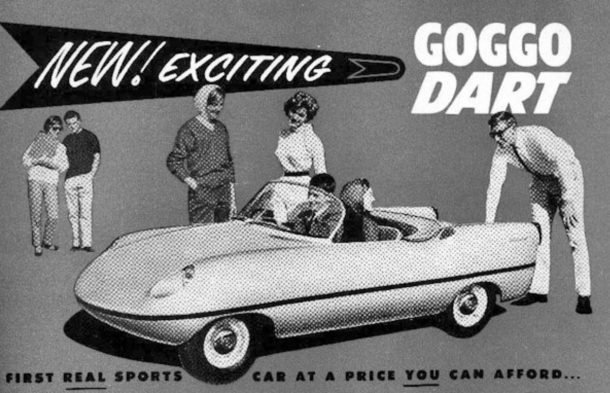https://www.youtube.com/watch?v=7zJqTZPCsgQ
" data-medium-file="http://theautomotivearchaeologist.com/wp-content/uploads/2021/09/rare-rides-a-1971-maserati-quattroporte-prototype-the-kings-sedan-6.png" data-large-file="http://theautomotivearchaeologist.com/wp-content/uploads/2021/09/rare-rides-a-1971-maserati-quattroporte-prototype-the-kings-sedan.png" class="aligncenter wp-image-1774900 size-large" src="http://theautomotivearchaeologist.com/wp-content/uploads/2021/09/rare-rides-a-1971-maserati-quattroporte-prototype-the-kings-sedan.png" alt width="610" height="343" srcset="http://theautomotivearchaeologist.com/wp-content/uploads/2021/09/rare-rides-a-1971-maserati-quattroporte-prototype-the-kings-sedan.png 610w, http://theautomotivearchaeologist.com/wp-content/uploads/2021/09/rare-rides-a-1971-maserati-quattroporte-prototype-the-kings-sedan-5.png 75w, http://theautomotivearchaeologist.com/wp-content/uploads/2021/09/rare-rides-a-1971-maserati-quattroporte-prototype-the-kings-sedan-6.png 450w, http://theautomotivearchaeologist.com/wp-content/uploads/2021/09/rare-rides-a-1971-maserati-quattroporte-prototype-the-kings-sedan-7.png 768w, http://theautomotivearchaeologist.com/wp-content/uploads/2021/09/rare-rides-a-1971-maserati-quattroporte-prototype-the-kings-sedan-8.png 120w, http://theautomotivearchaeologist.com/wp-content/uploads/2021/09/rare-rides-a-1971-maserati-quattroporte-prototype-the-kings-sedan-9.png 800w" sizes="(max-width: 610px) 100vw, 610px">Today’s Rare Ride was one of just two finished examples of the ill-fated second generation Maserati Quattroporte. Maserati envisioned a promising future for their large luxury sedan, but the company’s corporate parentage at the time had other (worse) ideas.
And this very car was fit for a king.
Maserati produced its first-generation Quattroporte from 1963 to 1969, a very early example of a brand new class of car: the high-performance grand touring sedan. With a large engine at the front and lots of leather in the middle, it was one of three Sixties sedans from Europe able to meet a 200 kph (124 mph) top speed.
https://www.youtube.com/watch?v=7zJqTZPCsgQ
" data-medium-file="http://theautomotivearchaeologist.com/wp-content/uploads/2021/09/rare-rides-a-1971-maserati-quattroporte-prototype-the-kings-sedan-11.png" data-large-file="http://theautomotivearchaeologist.com/wp-content/uploads/2021/09/rare-rides-a-1971-maserati-quattroporte-prototype-the-kings-sedan-1.png" class="aligncenter size-large wp-image-1774898" src="http://theautomotivearchaeologist.com/wp-content/uploads/2021/09/rare-rides-a-1971-maserati-quattroporte-prototype-the-kings-sedan-1.png" alt width="610" height="343" srcset="http://theautomotivearchaeologist.com/wp-content/uploads/2021/09/rare-rides-a-1971-maserati-quattroporte-prototype-the-kings-sedan-1.png 610w, http://theautomotivearchaeologist.com/wp-content/uploads/2021/09/rare-rides-a-1971-maserati-quattroporte-prototype-the-kings-sedan-10.png 75w, http://theautomotivearchaeologist.com/wp-content/uploads/2021/09/rare-rides-a-1971-maserati-quattroporte-prototype-the-kings-sedan-11.png 450w, http://theautomotivearchaeologist.com/wp-content/uploads/2021/09/rare-rides-a-1971-maserati-quattroporte-prototype-the-kings-sedan-12.png 768w, http://theautomotivearchaeologist.com/wp-content/uploads/2021/09/rare-rides-a-1971-maserati-quattroporte-prototype-the-kings-sedan-13.png 120w, http://theautomotivearchaeologist.com/wp-content/uploads/2021/09/rare-rides-a-1971-maserati-quattroporte-prototype-the-kings-sedan-14.png 800w" sizes="(max-width: 610px) 100vw, 610px">By the end of the Sixties, the original Quattroporte styling was looking fairly dated. Karim Aga Khan wanted a fresher Quattroporte and ordered up a bespoke sedan. Maserati set to work and built a new four-door on the Indy’s platform. Exterior design was handed to Frua, as the first-gen model was penned by Pietro himself. The new Quattroporte used Maserati’s 4.9-liter V8, good for 296 horsepower. Said power traveled to the rear wheels via an unspecified automatic transmission.
https://www.youtube.com/watch?v=7zJqTZPCsgQ
" data-medium-file="http://theautomotivearchaeologist.com/wp-content/uploads/2021/09/rare-rides-a-1971-maserati-quattroporte-prototype-the-kings-sedan-16.png" data-large-file="http://theautomotivearchaeologist.com/wp-content/uploads/2021/09/rare-rides-a-1971-maserati-quattroporte-prototype-the-kings-sedan-2.png" class="aligncenter size-large wp-image-1774896" src="http://theautomotivearchaeologist.com/wp-content/uploads/2021/09/rare-rides-a-1971-maserati-quattroporte-prototype-the-kings-sedan-2.png" alt width="610" height="343" srcset="http://theautomotivearchaeologist.com/wp-content/uploads/2021/09/rare-rides-a-1971-maserati-quattroporte-prototype-the-kings-sedan-2.png 610w, http://theautomotivearchaeologist.com/wp-content/uploads/2021/09/rare-rides-a-1971-maserati-quattroporte-prototype-the-kings-sedan-15.png 75w, http://theautomotivearchaeologist.com/wp-content/uploads/2021/09/rare-rides-a-1971-maserati-quattroporte-prototype-the-kings-sedan-16.png 450w, http://theautomotivearchaeologist.com/wp-content/uploads/2021/09/rare-rides-a-1971-maserati-quattroporte-prototype-the-kings-sedan-17.png 768w, http://theautomotivearchaeologist.com/wp-content/uploads/2021/09/rare-rides-a-1971-maserati-quattroporte-prototype-the-kings-sedan-18.png 120w, http://theautomotivearchaeologist.com/wp-content/uploads/2021/09/rare-rides-a-1971-maserati-quattroporte-prototype-the-kings-sedan-19.png 800w" sizes="(max-width: 610px) 100vw, 610px">The car was production-ready by 1971 and was displayed that year at the Paris Motor Show. Maserati knew there was a market for the new Quattroporte, and sealed its production fate with a new chassis code: AM121. But Maserati’s product plans were no longer their own to dictate, as the company’s ownership had passed from the Orsi family to Citroën in 1968.
https://www.youtube.com/watch?v=7zJqTZPCsgQ
" data-medium-file="http://theautomotivearchaeologist.com/wp-content/uploads/2021/09/rare-rides-a-1971-maserati-quattroporte-prototype-the-kings-sedan-21.png" data-large-file="http://theautomotivearchaeologist.com/wp-content/uploads/2021/09/rare-rides-a-1971-maserati-quattroporte-prototype-the-kings-sedan-3.png" class="aligncenter size-large wp-image-1774904" src="http://theautomotivearchaeologist.com/wp-content/uploads/2021/09/rare-rides-a-1971-maserati-quattroporte-prototype-the-kings-sedan-3.png" alt width="610" height="343" srcset="http://theautomotivearchaeologist.com/wp-content/uploads/2021/09/rare-rides-a-1971-maserati-quattroporte-prototype-the-kings-sedan-3.png 610w, http://theautomotivearchaeologist.com/wp-content/uploads/2021/09/rare-rides-a-1971-maserati-quattroporte-prototype-the-kings-sedan-20.png 75w, http://theautomotivearchaeologist.com/wp-content/uploads/2021/09/rare-rides-a-1971-maserati-quattroporte-prototype-the-kings-sedan-21.png 450w, http://theautomotivearchaeologist.com/wp-content/uploads/2021/09/rare-rides-a-1971-maserati-quattroporte-prototype-the-kings-sedan-22.png 768w, http://theautomotivearchaeologist.com/wp-content/uploads/2021/09/rare-rides-a-1971-maserati-quattroporte-prototype-the-kings-sedan-23.png 120w, http://theautomotivearchaeologist.com/wp-content/uploads/2021/09/rare-rides-a-1971-maserati-quattroporte-prototype-the-kings-sedan-24.png 800w" sizes="(max-width: 610px) 100vw, 610px">Citroën took a look at the very Italian and ready-to-go AM121, and said “Mais non, you will not build this car.” The French brass pressed Maserati to move on in a different direction with Quattroporte – a front-drive direction. The basis for the newly-ordered Quattroporte II (AM123) would be Citroën’s own SM luxury coupe. That one was a big flop but we’ll discuss it in another Rare Rides.
https://www.youtube.com/watch?v=7zJqTZPCsgQ
" data-medium-file="http://theautomotivearchaeologist.com/wp-content/uploads/2021/09/rare-rides-a-1971-maserati-quattroporte-prototype-the-kings-sedan-26.png" data-large-file="http://theautomotivearchaeologist.com/wp-content/uploads/2021/09/rare-rides-a-1971-maserati-quattroporte-prototype-the-kings-sedan-4.png" class="aligncenter size-large wp-image-1774906" src="http://theautomotivearchaeologist.com/wp-content/uploads/2021/09/rare-rides-a-1971-maserati-quattroporte-prototype-the-kings-sedan-4.png" alt width="610" height="376" srcset="http://theautomotivearchaeologist.com/wp-content/uploads/2021/09/rare-rides-a-1971-maserati-quattroporte-prototype-the-kings-sedan-4.png 610w, http://theautomotivearchaeologist.com/wp-content/uploads/2021/09/rare-rides-a-1971-maserati-quattroporte-prototype-the-kings-sedan-25.png 75w, http://theautomotivearchaeologist.com/wp-content/uploads/2021/09/rare-rides-a-1971-maserati-quattroporte-prototype-the-kings-sedan-26.png 450w, http://theautomotivearchaeologist.com/wp-content/uploads/2021/09/rare-rides-a-1971-maserati-quattroporte-prototype-the-kings-sedan-27.png 768w, http://theautomotivearchaeologist.com/wp-content/uploads/2021/09/rare-rides-a-1971-maserati-quattroporte-prototype-the-kings-sedan-28.png 120w" sizes="(max-width: 610px) 100vw, 610px">In the end, only two examples of the AM121 Quattroporte were finished. Aga Khan received his (chassis number 004) in 1974. The other finished example was chassis number 002, completed in 1971 and retained by Frua. Frua sold it fairly quickly to the King of Spain, Juan Carlos I. The king’s blue over tan AM121 goes to auction in November at Le Castellet, wherever that is.
Note: Images in this article are of the later 004 chassis, as they were the only ones publicly available for use.
[Images: YouTube]
Become a TTAC insider. Get the latest news, features, TTAC takes, and everything else that gets to the truth about cars first by subscribing to our newsletter.






